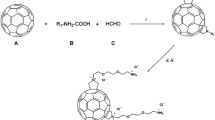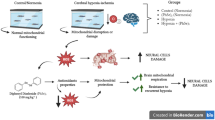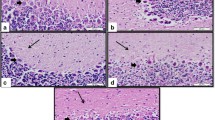Abstract
Background
Hypoxia is a pathological phenomenon of the central nervous system that occurs during ischemia and stroke, leading to brain cell damage. Astrocytes play an important role in maintaining homeostasis in the brain microenvironment under normal as well as in pathological conditions. 3-hydroxymorphinan (3-HM) is an active metabolite of dextromethorphan (DM) that is widely used in anti-cough remedies and is more potent and safer than DM in the treatment of neurological disorders. However, previous research has not examined whether 3-HM has a protective effect in ischemic condition.
Objective
In this study, we aimed to confirm the effect of 3-HM on hypoxia-induced astrocyte death. We also investigated the protective mechanism of 3-HM and its potential applicability in ischemia brain injury.
Result
For the in vitro hypoxic conditions, CoCl2, a hypoxia-mimetic agent, was added to mouse primary astrocytes. 200 μM of CoCl2 showed cytotoxicity, whereas pre-incubation with 3-HM attenuated cell death by CoCl2. Moreover, pre-treatment with 3-HM dramatically reduced oxidative stress and mitochondrial damage by CoCl2. Further, 3-HM significantly reduced intracellular calcium influx induced by extracellular glutamate and finally modulated the glutamate released from the astrocytes.
Conclusion
Taken together, these results suggest that 3-HM has a potential to regulate glutamate release from the astrocytic cell death in hypoxic condition and could be used as a promising preventive or therapeutic agent for ischemic brain injury.




Similar content being viewed by others
References
Anderson CM, Swanson RA (2000) Astrocyte glutamate transport: review of properties, regulation, and physiological functions. Glia 32:1–14
Chamorro Á, Dirnagl U, Urra X, Planas AM (2016) Neuroprotection in acute stroke: targeting excitotoxicity, oxidative and nitrosative stress, and inflammation. Lancet Neurol 15:869–881
Choi DW (1987) Dextrorphan and dextromethorphan attenuate glutamate neurotoxicity. Brain Res 403:333–336
Dietz AG, S AG, Nedergaard M (2020) Glial cells in schizophrenia: a unified hypothesis. Lancet Psychiatry 7:272–281
Görlach A, Bertram K, Hudecova S, Krizanova O (2015) Calcium and ROS: a mutual interplay. Redox Biol 6:260–271
Habib N, Cristin McCabe S, Medina M, Varshavsky D, Kitsberg R, Dvir-Szternfeld G, Green D, Dionne L, Nguyen JL, Marshall F, Chen F, Zhang T, Kaplan A, Regev MS (2020) Disease-associated astrocytes in Alzheimer’s disease and aging. Nat Neurosci 23:701–706
Kirdajova DB, Kriska J, Tureckova J, Anderova M (2020) Ischemia-triggered glutamate excitotoxicity from the perspective of glial cells. Front Cell Neurosci 14:51
Krzyzanowska W, P B, Filip M, Pera J (2014) Glutamate transporters in brain ischemia: to modulate or not? Acta Pharmacol Sin 35:444–462
Lee JH, Choi SH, Baek MW, Kim MH, Kim HJ, Kim SH, Oh SJ, Park HJ, Kim WJ, Jung JY (2013) CoCl2 induces apoptosis through the mitochondria- and death receptor-mediated pathway in the mouse embryonic stem cells. Mol Cell Biochem 379:133–140
Lewis DK, Thomas KT, Selvamani A, Sohrabji F (2012) Age-related severity of focal ischemia in female rats is associated with impaired astrocyte function. Neurobiol Aging 33:1123.e1121-1123.e1116
Lo EH, Moskowitz MA, Jacobs TP (2005) Exciting, radical, suicidal: how brain cells die after stroke. Stroke 36:189–192
Marmiroli P, Cavaletti G (2012) The glutamatergic neurotransmission in the central nervous system. Curr Med Chem 19:1269–1276
Matute C, Domercq M, Sanchez-Gomez M (2006) Glutamate-mediated glial injury: mechanisms and clinical importance. Glia 53:212–224
Mccarthy KD, de Vellis J (1980) Preparation of separate astroglial and oligodendroglial cell cultures from rat cerebral tissues. J Cell Biol 85:890–902
Pinky NF, Wilkie CM, Barnes JR, Parsons MP (2018) Region- and activity-dependent regulation of extracellular glutamate. J Neurosci 38:5351–5366
Schildge S, Bohrer C, Beck K, Schachtrup C (2013) Isolation and culture of mouse cortical astrocytes. J vis Exp 71:50079
Shin EJ, Bach JH, Lee SY, Kim JM, Lee J, Hong JS, Nabeshima T, Kim HC (2011) Neuropsychotoxic and neuroprotective potentials of dextromethorphan and its analogs. J Pharmacol Sci 116:137–148
Sofroniew MV, Vinters HV (2010) Astrocytes: biology and pathology. Acta Neuropathol 119:7–35
Takuma K, Baba A, Matsuda T (2004) Astrocyte apoptosis: implications for neuroprotection. Prog Neurobiol 72:111–127
Umemura K, Gemba T, Mizuno A, Nakashima M (1996) Inhibitory effect of MS-153 on elevated brain glutamate level induced by rat middle cerebral artery occlusion. Stroke 27:1624–1628
Volterra A, Trotti D, Racagni G (1994) Glutamate uptake is inhibited by arachidonic acid and oxygen radicals via two distinct and additive mechanisms. Mol Pharmacol 46:986–992
Zhang W, Qin L, Wang T, Wei SJ, Gao HM, Liu J, Wilson B, Liu B, Zhang W, Kim HC, Hong JS (2005) 3-hydroxymorphinan is neurotrophic to dopaminergic neurons and is also neuroprotective against LPS-induced neurotoxicity. FASEB J 19:395–397
Zhang W, Shin EJ, Wang T, Lee PH, Pang H, Wie MB, Kim WK, Kim SJ, Huang WH, Wang Y, Zhang W, Hong JS, Kim HC (2006) 3-Hydroxymorphinan, a metabolite of dextromethorphan, protects nigrostriatal pathway against MPTP-elicited damage both in vivo and in vitro. FASEB J 20:2496–2511
Acknowledgements
Not applicable.
Funding
This research was supported by a National Research Foundation of Korea (NRF) grant funded by the Korean government (Grant No. 2020R1A2C2011617) and by the Chung-Ang University Research Scholarship Grant in 2020.
Author information
Authors and Affiliations
Contributions
Ok-Hyeon Kim contributed to investigation, methodology, data curation, and writing—original draft. Gyeong Yun Lee contributed to methodology and writing—original draft. Kyung Yong Kim contributed to conceptualization, investigation and writing—original draft. Jong In Son contributed to investigation and methodology. Tae Woo Jung, Ji Hoon Jeong, Joon Seok Bang, and Hyoung-Chun Kim contributed to conceptualization and investigation. Yoon Hee Chung contributed to conceptualization and methodology. Hyun Jung Lee contributed to conceptualization, investigation, formal analysis, funding acquisition, writing—original draft, and writing—review and editing.
Corresponding author
Ethics declarations
Conflict of interest
Ok-Hyeon Kim declares that she has no conflict of interest. Gyeong Yun Lee declares that he has no conflict of interest. Kyung Yong Kim declares that he has no conflict of interest. Jong In Son declares that he has no conflict of interest. Tae Woo Jung declares that he has no conflict of interest. Ji Hoon Jeong declares that he has no conflict of interest. Joon Seok Bang declares that he has no conflict of interest. Hyoung-Chun Kim declares that he has no conflict of interest. Yoon Hee Chung declares that she has no conflict of interest. Hyun Jung Lee declares that she has no conflict of interest.
Ethical approval
This research was approved by the Institutional Animal Care Use Committee (IACUC) of Chung-Ang University (Approval ID: 202100006).
Additional information
Publisher's Note
Springer Nature remains neutral with regard to jurisdictional claims in published maps and institutional affiliations.
Rights and permissions
About this article
Cite this article
Kim, OH., Lee, G.Y., Kim, K.Y. et al. 3-Hydroxymorphinan protects against hypoxia-induced cell death in primary astrocyte by regulating Ca2+ influx and the glutamate homeostasis. Mol. Cell. Toxicol. 19, 145–153 (2023). https://doi.org/10.1007/s13273-022-00276-4
Accepted:
Published:
Issue Date:
DOI: https://doi.org/10.1007/s13273-022-00276-4




